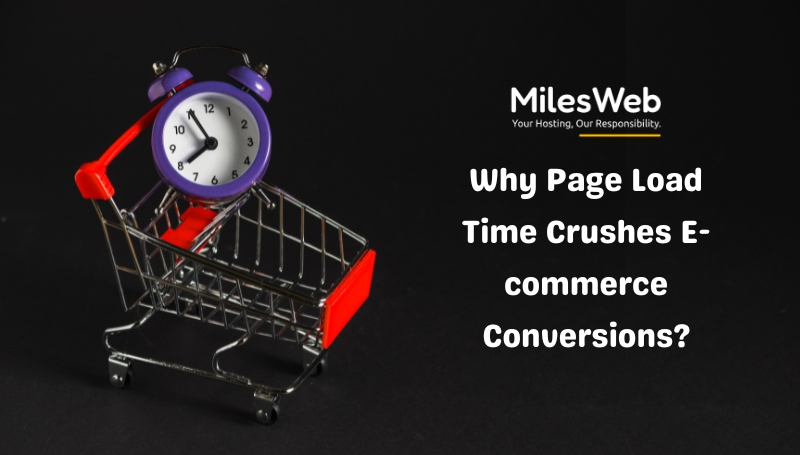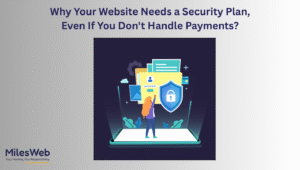In this fast-paced digital marketplace, every second matters. E-commerce websites’ page loading speed can make or break the customer experience and sales performance. Google reports that even a 1-second delay reduces the website conversion rate by 20%. With customers expecting instant access and seamless navigation, slow-loading websites quickly lose traffic, trust, and revenue.
Speed is no longer a technical concern with the best e-commerce hosting plan. Overall, it directly contributes to the brand’s credibility and customer satisfaction. E-commerce businesses invest in speed optimization not just to improve user experience but also to protect their bottom line. This blog explores six critical reasons why higher page load times are crushing conversions and what businesses can do to avoid them.
Ways Page Loading Time Affects Conversions
- User Experience Takes a Hit
When a page’s loading time increases, users abandon the cart without a second thought. Long wait times always frustrate potential buyers. It leads to a high bounce rate and missed sales opportunities. In the business world, first impressions are crucial, and using slow-loading web pages makes a business less appealing, ultimately pushing users to competitors.
Accessing and navigating through a website requires a user’s valuable attention. A website’s graphical user interface, as well as a piece of content posted on it, improves the customer experience but has some latency in yielding enhanced browser appeal. For e-commerce websites, hosted with Laravel website hosting, for them, speed is an invaluable asset in rendering seamless service because it improves the overall experience.
- Search Engine Rankings Drop
Website speed is a major ranking factor. This is a clear update from Google. Slower websites are penalized in search results to reduce visibility. Not appearing on the first page results in losing a potential customer.
For e-commerce sites, organic traffic is the main revenue stream. Slow site speed increases bounce rate and disengagement, leading to a drop in load and engagement, which increases sales. Improving site speed is one of the best long-term SEO investments, resulting in increased traffic and higher conversions.
- Mobile Shoppers Are Impatient
Mobile eCommerce is booming, but mobile users don’t compromise on performance standards. A sluggish mobile browsing experience discourages on-the-go buyers from completing their purchases. Search engines follow the principle of mobile-first indexing, which ensures a higher mobile performance over the desktop.
Slow mobile loading time disrupts the buyer journey. It is especially at critical stages like product comparison or checkout. Ensuring the mobile-optimized speed is not just a UX practice. It is also an essential factor for retaining today’s mobile-savvy consumers and maximizing conversions on smaller screens.
- Cart Abandonment Skyrockets
The checkout steps become fragmented as the abandonment rates increase. Screen lag time during the checkout process could be a deal breaker. Minor buffering during the purchasing process prompts potential buyers to reconsider their cart items.
Buyers can be second-guessed with two-step verification for on-the-spot decisions. Scorching speed enhances concentration, which is key during a congested shopping day like Black Friday. Aiding to a greater adapt rate, streamlining processes helps adjust swiftly.
- Customer Trust Minimizes
Consumers equate a slow site to a lack of quality and potential security risks, as well as the use of obsolete technology. Trust is vital on the internet for commerce, and if the website in question seems untrustworthy, users are most likely not going to risk entering their personal or payment details.
Compared to the aforementioned scenario, online stores with websites that have fast-loading pages create a polished, modern, and professional image, which instils confidence in first-time and returning buyers. Speed nurtures credibility, and in the competitive markets of today, credibility translates into profit. Brands can enhance trust and foster a safer shopping environment by improving load times.
- Lost Competitive Advantage
In e-commerce, competitors are merely a single click away. Internet users do not have the time to wait for slow pages to load; faster, responsive competitors are just one click away. In certain contexts, speed alone can be the decisive factor that tips the scales in one’s favour.
Investing in performance optimization, alongside having a faster website, gives your business a tangible advantage. Increased visitor retention translates to greater chances of making sales when your site outpaces competitors in loading times. In a market with fleeting customer attention spans, investing time and resources in faster load speed can unlock long-term growth and customer loyalty.
Summing Up
In the world of e-commerce, speed isn’t just a technical metric; it’s a critical business driver. A slow-loading website silently drains conversions, damages your brand’s credibility, and pushes potential buyers into the arms of your competitors. From user experience and search engine rankings to cart abandonment and trust, every aspect of your online store is impacted by how quickly your site loads.
Investing in website performance is no longer optional; it’s essential. Whether you’re a small business or a large-scale enterprise, optimizing page load time can significantly improve conversion rates and overall revenue. By prioritizing speed, you create a faster, smoother, and more trustworthy shopping experience, one that keeps customers engaged and more likely to convert. In a competitive digital marketplace, page speed isn’t just an advantage; it’s a necessity.





